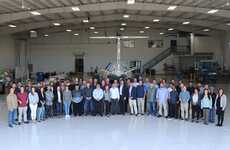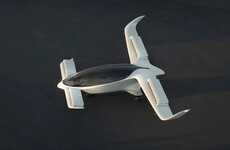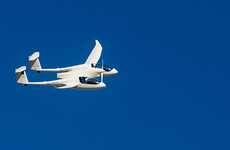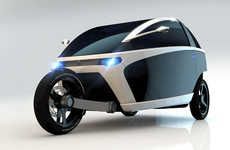
Siemens' Prototype Electric Aircraft Motor is Surprisingly Powerful
Rahul Kalvapalle — April 20, 2015 — Autos
Researchers and engineers at Siemens have developed a new prototype electric aircraft engine that weighs only 50 kg but still produces 260 kW of power at 2,500 RPM. This makes the motor an incredible five times more powerful than similarly sized motors, and suggests that it offers enough power to lift aircraft weighing up to 2 tons.
The motor was developed by considering all previous electric aircraft engines and optimizing each individual element from these engines. Computer simulation was used to model the motor prior to physical construction. The end result is an engine that boasts a weight-to-performance ratio of 5 kW per kilogram, which is pretty exceptional.
While it sounds ludicrous to claim that a 50 kg motor can pack enough punch to help a 2-ton aircraft lift off, these numbers show how far engine innovation has come. It also proves the viability of electric aircraft engines, which should prove to be an economical and environmentally sound alternative to conventional aircraft engines.
The motor was developed by considering all previous electric aircraft engines and optimizing each individual element from these engines. Computer simulation was used to model the motor prior to physical construction. The end result is an engine that boasts a weight-to-performance ratio of 5 kW per kilogram, which is pretty exceptional.
While it sounds ludicrous to claim that a 50 kg motor can pack enough punch to help a 2-ton aircraft lift off, these numbers show how far engine innovation has come. It also proves the viability of electric aircraft engines, which should prove to be an economical and environmentally sound alternative to conventional aircraft engines.
Trend Themes
1. Electric Aircraft Engines - New prototype electric aircraft engine produces five times more power than similarly sized motors, opening up opportunities for electric aircraft innovation.
2. Optimized Design - Computer simulation and optimization of electric aircraft engine elements can lead to exceptional weight-to-performance ratios and inspire new design approaches.
3. Economical and Eco-friendly Alternatives - Electric aircraft engines offer a viable and environmentally sound alternative to conventional aircraft engines, creating opportunities for innovation in the aviation industry.
Industry Implications
1. Aviation - New, powerful electric aircraft engines make it possible for airlines and aviation companies to create more eco-friendly and efficient aircraft.
2. Electric Vehicle Manufacturing - The development of more powerful and efficient electric aircraft engines could inspire new electric vehicle technologies in the automotive industry.
3. Engineering and Manufacturing - The optimization of electric aircraft engine elements using computer simulation and modeling poses unique opportunities for innovation and design in the engineering and manufacturing industries.
5.9
Score
Popularity
Activity
Freshness























